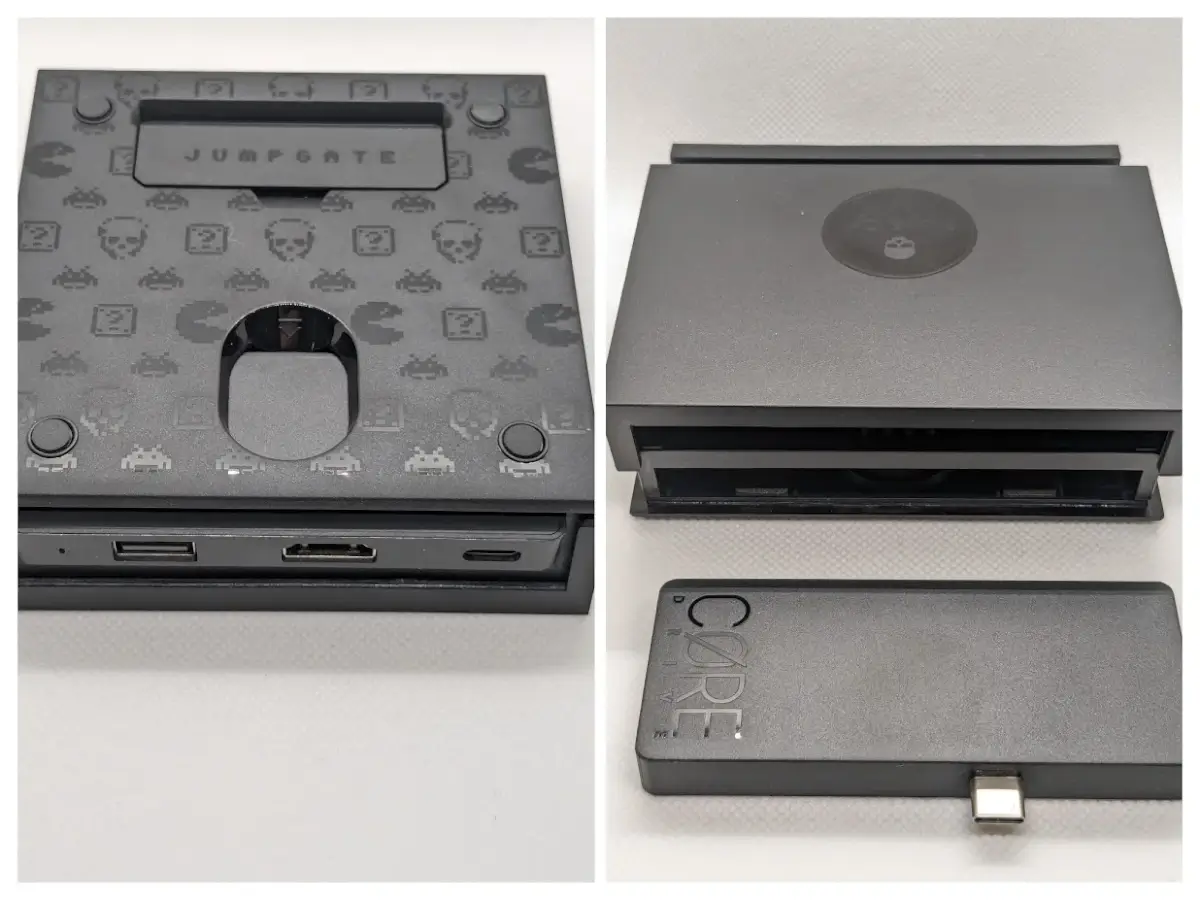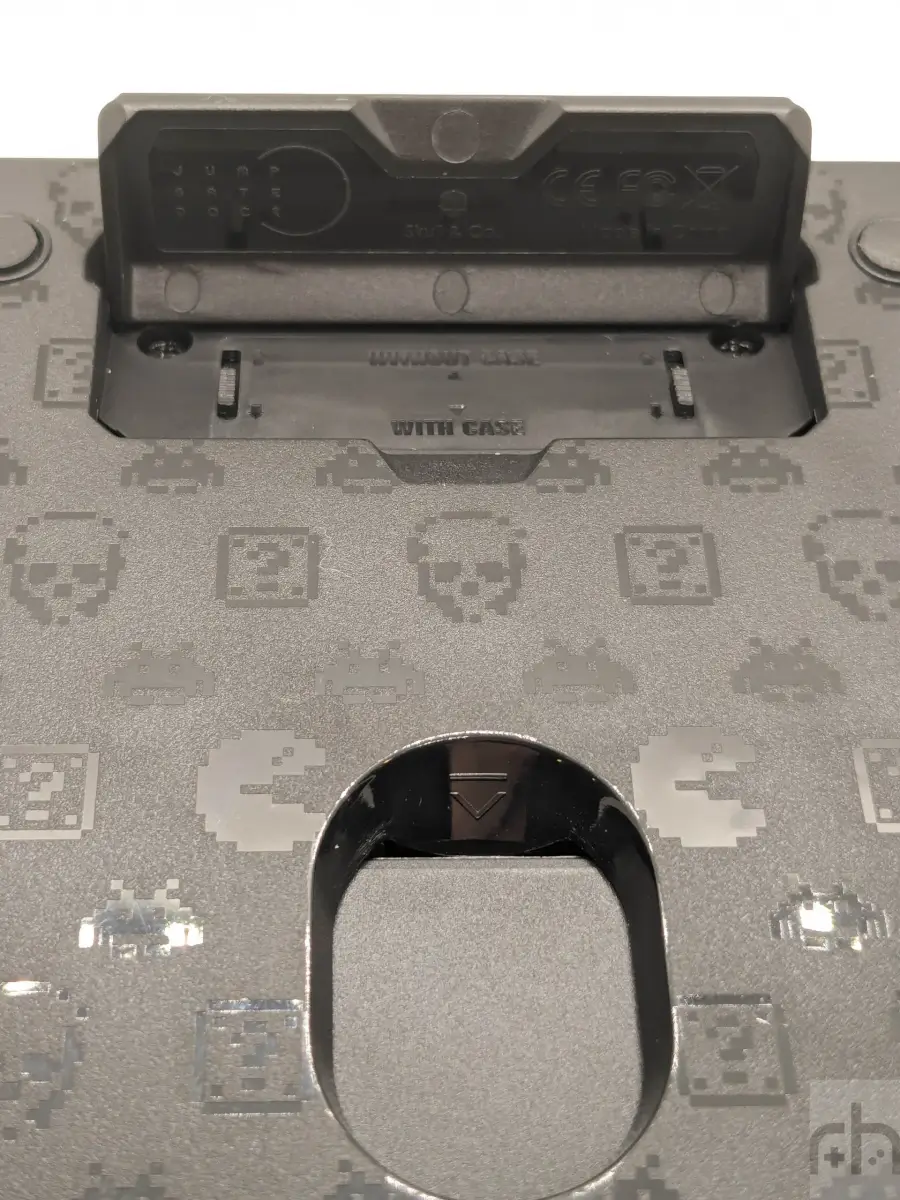When Nintendo debuted the Switch in 2017, there was still a lot of hesitation after their misfire with the WiiU. Given the Switch’s 100+ million console sales and ubiquity around the world, it’s difficult to remember that people were once unsure about whether this hybrid console thing would take off. The allure of seamlessly transitioning from a traditional couch/TV gaming experience to handheld gaming, when executed well, is undeniable.
Some folks primarily leave their systems docked and others really only play handheld, but regardless of where your preferences lay, it’s always nice to have the option. The Steam Deck proved that a handheld PC could be viable, as well as provide a traditional console or desktop experience. As handhelds keep increasing in power, gamers want more options with how they use them.

Front view of Jumpgate Dock
Skull and Co. is a third-party accessory manufacturer producing products such as docks, replacement parts, screen protectors, adaptors, etc. All the little fun stuff we tinkerers like toying with to squeeze the most out of our devices.
The Jumpgate dock is an interesting addition to the market as it advertises better size, airflow, and a host of other improvements over the official Nintendo Switch dock. Where the item becomes especially interesting, though, is its versatility to work as a dock for a host of other devices through a unique modular design.

Jumpgate Dock Bottom and Core
Packaging for the Dock promises functionality for the Switch, Laptops, and Smartphones, but I actually picked it at the recommendation of users in the RH Discord as I had been looking for a dock solution for the Odin 2 that Santa kindly brought over the holidays. It sells directly from the manufacturer’s website for $19.99 or on Amazon for $23.99.
With the official AYN Odin 2 Super Dock coming in at about double the price (previously more), I thought I’d give the Jumpgate a go. Wherever you order from, the item will be coming directly from China, so expect to wait a bit. Mine arrived in about 10 days from the time of order.

Close-up on back of Jumpgate Dock
The Jumpgate has a fairly minimalist design with an all-black exterior and clean angled lines. It’s very reminiscent of the PS4 aesthetic. The plastic shell and Core case are perfectly fine for what they need to be, and the connection points seem solid.
The unit is compact (about the size of your fist) and could easily serve as a go-to travel option for multiple devices. A classic NES-style spring mechanism allows the top of the dock to raise or lower depending on device layouts and their specific requirements. Some included slide locks allow you to fix the dock into position as desired (see pictured).
The dock design features a standard device cradle with a USB-C plug for connection and charging. Where the Jumpgate differs from other docks though, is the Core Drive. A small rectangular unit that slides out from the base of the dock and has a USB-C out on one end and USB-C, USB-A 3.0, and HDMI ports for external connections. This would allow you to theoretically use the dock for almost any device that supports these standards. The bottom of the device includes a foldout kickstand should the mood strike you, and a convenient thumb gap for sliding out the Core Drive.
It’s etched with a cute little homage to gaming icons that really show a level of care in design. After removing what Skull and Co. call a “guide pillar”, my Odin 2 sat right into the dock and displayed to my monitor instantly. The pillar serves as a small spacer to best fit the Switch design but is handily removable to make room for something like the Odin. This is a crucial feature, as other Docks can require modification to fit devices they may not have been designed around.

Guide Pillar next to Jumpgate Dock
The dock is outputting at 1080p 60hz and looks great even on the cheap desk display setup I’m currently rocking. There is no noticeable input lag on menus or in-game, and the Daijisho experience translates well over to a BT controller. Tests with a Switch OLED and Steam Deck produced similarly quality results.
The devices went to and woke up from sleep on command and as instantly as the system allowed. I didn’t notice any issues with the display flickering or the display continuously searching for a signal when the output device was sleeping. All the things you want to know that a dock is doing like it’s supposed to.

Odin 2 connected to Jumpgate Dock and outputting to TV
The Skull & Co. Jumpgate Dock does what it sets out to do, and does it well. What were once clear lines between consoles, PCs, and handhelds continue to blur, and gamers are all the better off for it. With this one device, I can go from handheld play on my Switch/Odin/Steam Deck, etc. right to couch and TV combo comfort.
I can come in from playing on the train, plug right into my TV, and pick up a waiting controller to continue the experience as I see fit. This type of freedom is rapidly becoming expected in the minds of consumers, and the Skull and Co. dock provides a great budget-friendly option to make the most out of your devices at home or on the go.
Purchase the Skull & Co. Jumpgate device from Amazon.
What did you think of this article? Let us know in the comments below, and chat with us in our Discord!
This page may contain affiliate links, by purchasing something through a link, Retro Handhelds may earn a small commission on the sale at no additional cost to you.
